


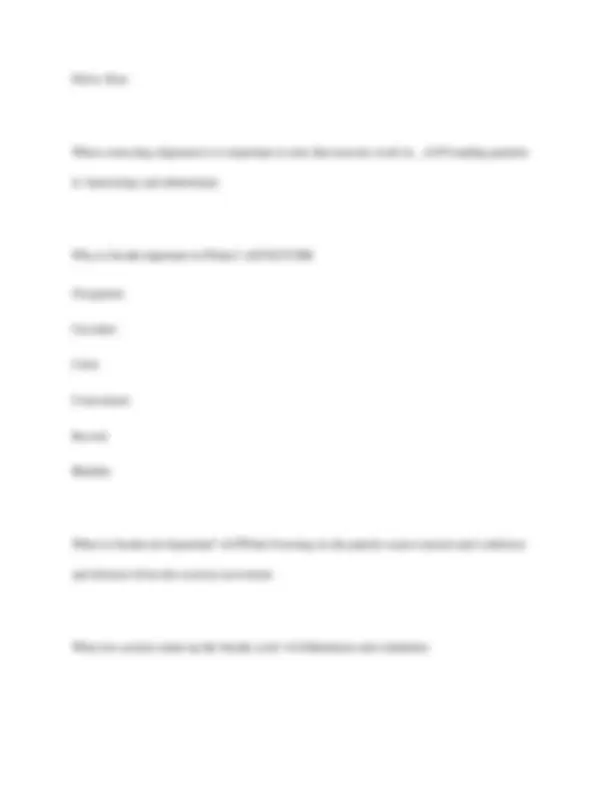
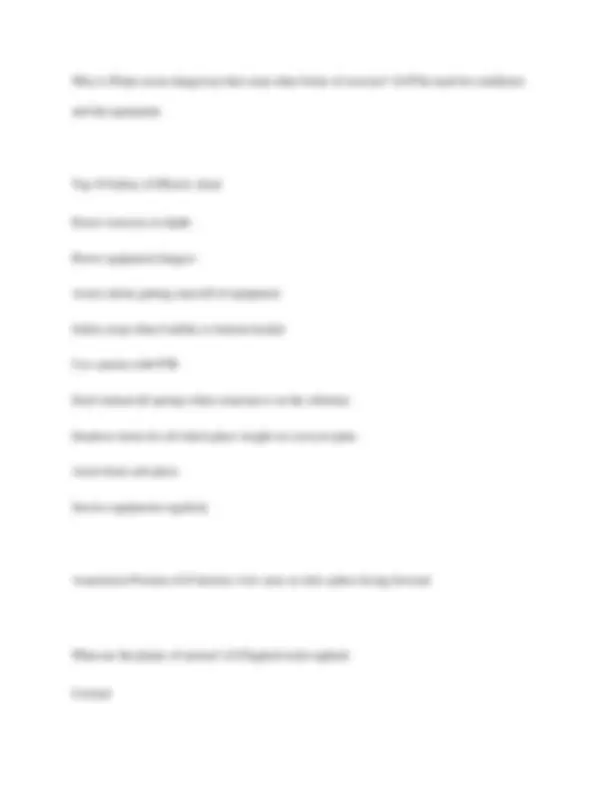
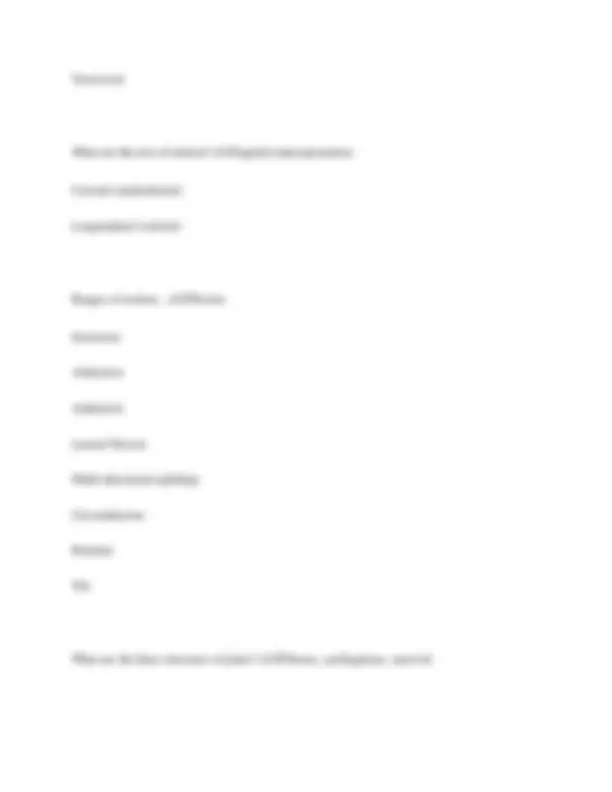
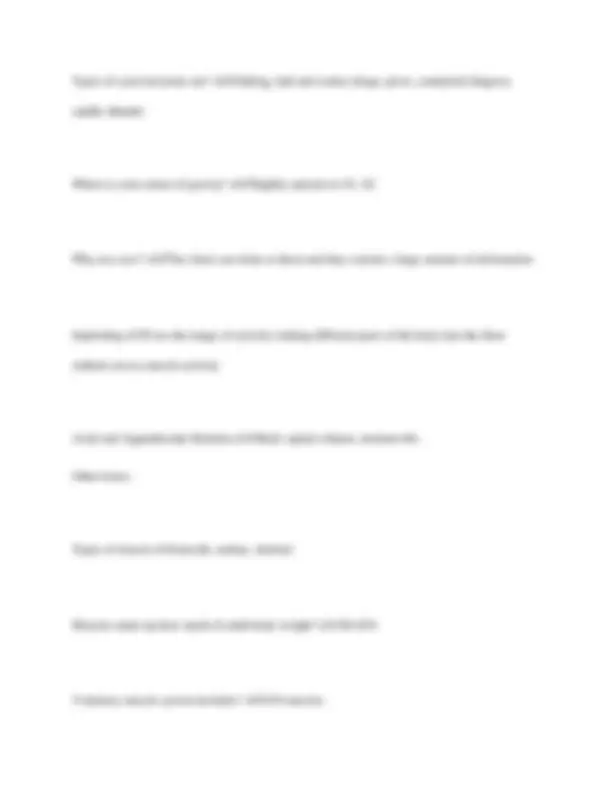
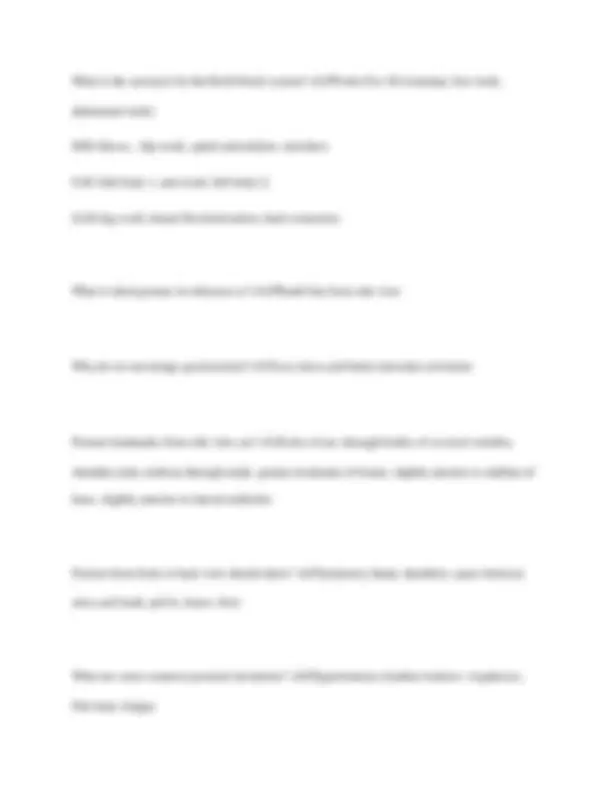
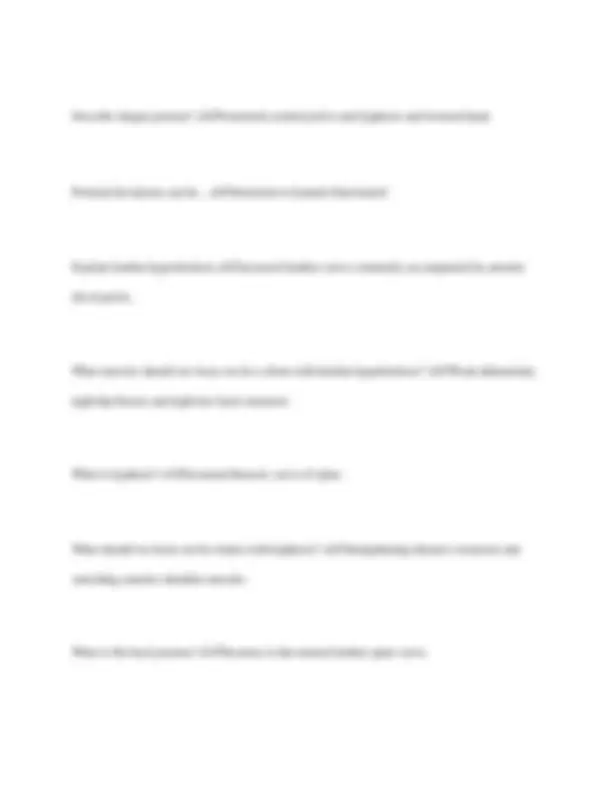
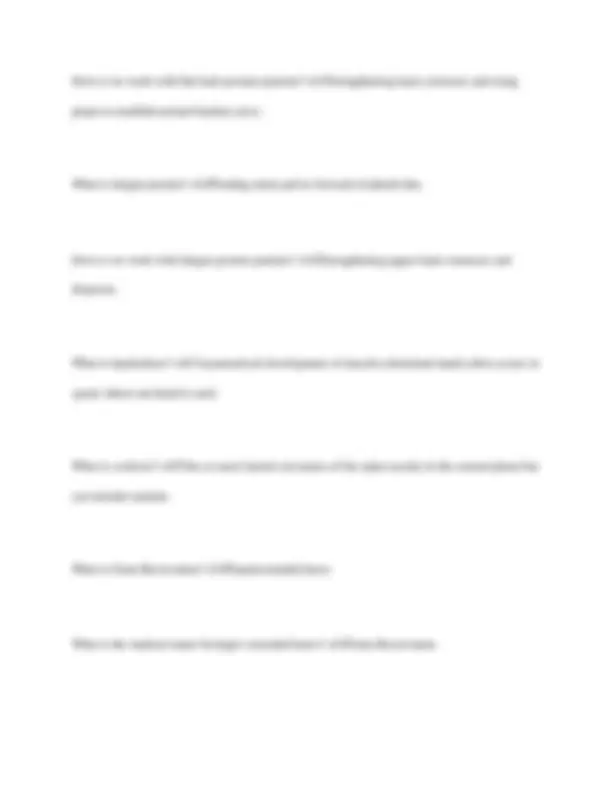

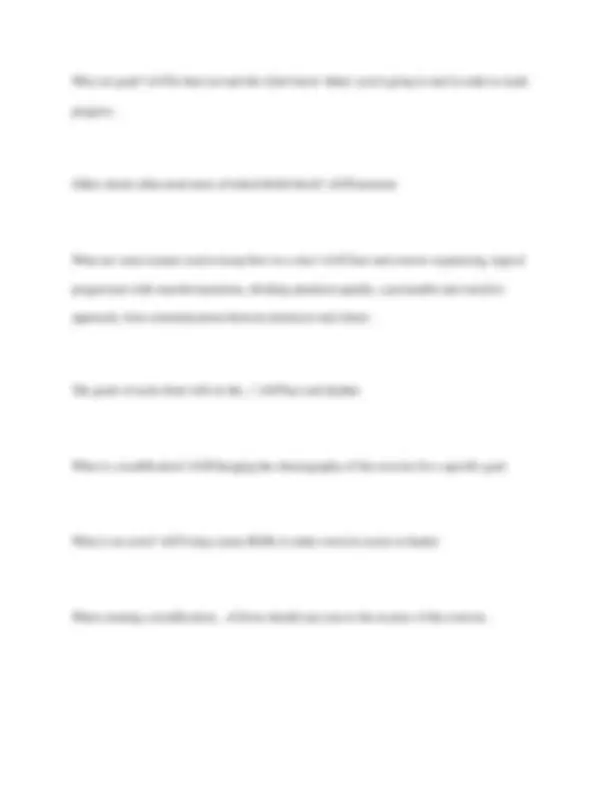
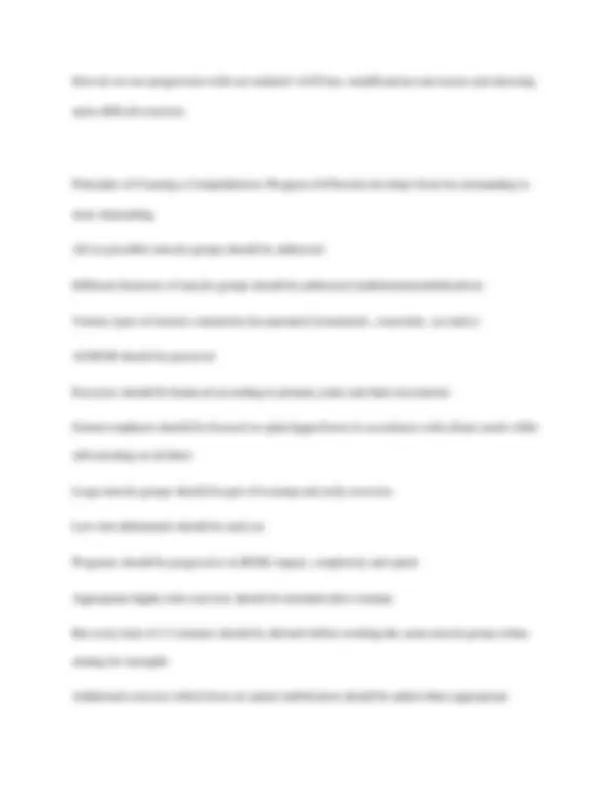




Study with the several resources on Docsity

Earn points by helping other students or get them with a premium plan


Prepare for your exams
Study with the several resources on Docsity

Earn points to download
Earn points by helping other students or get them with a premium plan
Community
Ask the community for help and clear up your study doubts
Discover the best universities in your country according to Docsity users
Free resources
Download our free guides on studying techniques, anxiety management strategies, and thesis advice from Docsity tutors
Where was Joseph Pilates born? ✔✔Dusseldorf Germany When was J Pilates born? ✔✔1883 Why did he become interested in different forms of exercise? ✔✔He was a sickly child with asthma, rheumatic fever and rickets. What kinds of exercise did he learn from? ✔✔Eastern and Western exercises as well as ancient Grecian and Roman regimes. Why did Pilates leave Germany? ✔✔Either because of being asked to train German soldiers or because he received an offer to train a world title holding boxer. When did Pilates come to America? ✔✔1926 Who did Pilates meet on his journey to America? ✔✔His wife Clara.
Typology: Exams
1 / 22

This page cannot be seen from the preview
Don't miss anything!















Where was Joseph Pilates born? ✔✔Dusseldorf Germany
When was J Pilates born? ✔✔ 1883
Why did he become interested in different forms of exercise? ✔✔He was a sickly child with asthma, rheumatic fever and rickets.
What kinds of exercise did he learn from? ✔✔Eastern and Western exercises as well as ancient Grecian and Roman regimes.
Why did Pilates leave Germany? ✔✔Either because of being asked to train German soldiers or because he received an offer to train a world title holding boxer.
When did Pilates come to America? ✔✔ 1926
Who did Pilates meet on his journey to America? ✔✔His wife Clara.
Where was the first Pilates studio? ✔✔New York City.
In his lifetime how many exercises did Pilates create? ✔✔Over 600
What was his overall philosophy of movement? ✔✔To achieve good health you need to exercise the entire body and include a holistic approach.
What was Pilates originally called? ✔✔Contrology
What are the 10 BASI principles? ✔✔Awareness, Balance, Breath, Concentration, Center, Control, Efficiency, Flow, Precision, Harmony
What does Awareness mean? ✔✔Sensory patterns
What does Balance mean? ✔✔Balance between parts of body, also physical act of balancing
Define neutral pelvis ✔✔ASIS and PS are in same coronal plane and both ASIS are on same transverse plane.
Define neutral spine ✔✔When natural curves of spine are present.
Relationship between NP and NS ✔✔Spine cannot be neutral if pelvis is not but you can have a neutral pelvis without neutral spine (chest lift)
What is a tucked pelvis? ✔✔Posterior tilt - ASIS posterior to PS
What is a arched pelvis? ✔✔Anterior tilt - ASIS anterior to PS
Why do we work in a NP? ✔✔Balanced muscular development, correct muscle recruitment, teaches efficient posture/alignment, re-enforces functional/positive movement patterns
Muscle groups acting on pelvis are? ✔✔Spinal flexors, extensors, lateral flexors, rotators
Hip flexors, extensors, external/internal rotators, ab/adductors
Pelvic floor
When correcting alignment it is important to note that muscles work in... ✔✔Coupling patterns ie: hamstrings and abdominals
Why is breath important in Pilates? ✔✔OCCCRR
Oxygenate
Circulate
Calm
Concentrate
Recruit
Rhythm
When is breath not important? ✔✔When focusing on the pattern causes tension and confusion and distracts from the exercise movement
What two actions make up the breath cycle? ✔✔Inhalation and exhalation
Cues are? ✔✔Related to the execution of the exercise and important to achieve precision.
SIM ✔✔Stabilize, initiate, move
Stabilizer ✔✔Muscles which stabilize body in order to prepare for movement
Initiator ✔✔Initial cue or focus of the movement (bridge between stabilizer and mover)
Mover ✔✔Muscles which create movement
Which part of SIM is the "mind" part of the movement? ✔✔Initiator
What are some safety issues we need to keep in mind? ✔✔Always warm up, make sure to prepare the body for each action, monitor heart rate and body temp and always conclude with a cool down.
Why is Pilates more dangerous that some other forms of exercise? ✔✔The need for stabilizers and the equipment
Top 10 Safety ✔✔Know client
Know exercises in depth
Know equipment dangers
Assist clients getting onto/off of equipment
Safety strap when Cadillac is bottom loaded
Use caution with PTB
Don't unload all springs when someone is on the reformer
Headrest down for all which place weight on cervical spine
Assist from safe place
Service equipment regularly
Anatomical Position ✔✔Anterior view arms at sides palms facing forward
What are the planes of motion? ✔✔Sagittal (mid-sagittal)
Coronal
Types of synovial joints are? ✔✔Gliding, ball and socket, hinge, pivot, condyloid (fingers), saddle (thumb)
Where is your center of gravity? ✔✔Slightly anterior to S1, S
Why use cues? ✔✔The client can relate to them and they contain a large amount of information.
Imprinting ✔✔Uses the image of actively sinking different parts of the body into the floor without excess muscle activity
Axial and Appendicular Skeleton ✔✔Skull, spinal column, sternum ribs
Other bones
Types of muscle ✔✔smooth, cardiac, skeletal
Muscles make up how much of adult body weight? ✔✔40-45%
Voluntary muscle system includes? ✔✔434 muscles
How many pairs of muscles are included in posture? ✔✔ 75
Tonic vs Phasic ✔✔Fast/slow twitch
Roles of Muscles ✔✔Agonist, Antagonist, Synergist, Stabilizer, Co-contractor
Types of Contraction ✔✔Isometric, Isotonic, Concentric, Eccentric, Isokinetic
What is the BASI mat block system? ✔✔Foundation
Abdominal Work
Spinal Articulation
Bridging
Lateral Flexion/Rotation
Back Extension
What exercises are in the fundamental BASI warmup? ✔✔Pelvic curl, spine twist supine, chest lift, chest lift with rotation
What is the acronym for the BASI block system? ✔✔Works For All (warmup, foot work, abdominal work)
HSS (hissss... hip work, spinal articulation, stretches)
FAF (full body 1, arm work, full body 2)
LLB (leg work, lateral flexion/rotation, back extension)
What is ideal posture in reference to? ✔✔Plumb line from side view
Why do we encourage good posture? ✔✔Less stress and better muscular activation
Posture landmarks from side view are? ✔✔Lobe of ear, through bodies of cervical vertebra, shoulder joint, midway through trunk, greater trochanter of femur, slightly anterior to midline of knee, slightly anterior to lateral malleolus
Posture from front or back view should show? ✔✔Symmetry (head, shoulders, space between arms and trunk, pelvis, knees, feet)
What are some common postural deviations? ✔✔Hyperlordosis (lumbar lordosis + kyphosis), Flat back, fatigue
Describe fatigue posture? ✔✔Posteriorly tucked pelvis and kyphosis and forward head
Postural deviations can be... ✔✔Structural or learned (functional)
Explain lumbar hyperlordosis ✔✔Increased lumbar curve commonly accompanied by anterior tilt of pelvis.
What muscles should we focus on for a client with lumbar hyperlordosis? ✔✔Weak abdominals, tight hip flexors and tight low back extensors
What is kyphosis? ✔✔Increased thoracic curve of spine.
What should we focus on for clients with kyphosis? ✔✔Strengthening thoracic extensors and stretching anterior shoulder muscles
What is flat back posture? ✔✔Decrease in the normal lumbar spine curve.
What is Genu Valgum? ✔✔Knocked knees - lateral deviation of the distal tibia relative to the knee
What is the technical term for knocked knees? ✔✔Genu Valgum
What is Genu Varum? ✔✔Bow legs - medial deviation of the distal tibia relative to the knee
What is the technical term for bow legs? ✔✔Genu Varum
Which two muscles have been singled out as important in preventing/assisting in back pain? ✔✔TA and Multifidi and overall flexibility
What tool does BASI offer for postural analysis? ✔✔Roll down
What percentage of people will be incapacitates by back pain in their life? ✔✔80%
What two abdominal muscles should be focused on for back pain clients? ✔✔TA and obliques
What other muscles (besides abdominals) help back pain patients? ✔✔Multifidi, pelvic floor
What do we consider when making sure a plan is effective? ✔✔ROM, sufficent intensity, sufficient overload, correct mechanics, correct recruitment, utilizing intra-abdominal pressure
What is a contraindication? ✔✔Something not recommended for a client because of some restriction.
Potential risks can be increased by? ✔✔Poor mechanics, incorrect muscle recruitment, excessive overload, and individuals predisposition to injury.
Movement patterns... ✔✔Movement patterns that are necessary for life should not be dismissed completely because of contraindications.
Disc Protrusion ✔✔Herniated disk
Herniated Disk ✔✔focal bulge of disc
Why set goals? ✔✔So that you and the client know where you're going to and in order to mark progress.
Older clients often need more of which BASI block? ✔✔Extension
What are some tenants used to keep flow in a class? ✔✔Clear and concise sequencing, logical progression with smooth transitions, dividing attention equally, a personable and sensitive approach, clear communication between instructor and clients
The goals of each client will set the...? ✔✔Pace and rhythm
What is a modification? ✔✔Changing the choreography of the exercise for a specific goal.
What is an assist? ✔✔Using a prop (RUB) to make exercise easier or harder
When creating a modification... ✔✔you should stay true to the essence of the exercise.
How do we use progression with our students? ✔✔Cues, modifications and assists and choosing more difficult exercises
Principles of Creating a Comprehensive Program ✔✔Session develops from less demanding to more demanding
All (as possible) muscle groups should be addressed
Different functions of muscle groups should be addressed (stabilization/mobilization)
Various types of muscle contraction incorporated (isommetric, concentric, eccentric)
All ROM should be practiced
Exercises should be balanced according to primary joints and their movements
Greater emphasis should be focused on spine/upper/lower in accordance with clients needs while still touching on all three
Large muscle groups should be part of warmup and early exercises
Low risk abdominals should be early on
Programs should be progressive in ROM, impact, complexity and speed
Appropriate higher risk exercises should be included after warmup
Recovery time of 2-3 minutes should be allowed before working the same muscle group (when aiming for strength)
Additional exercises which focus on spinal stabilization should be added when appropriate